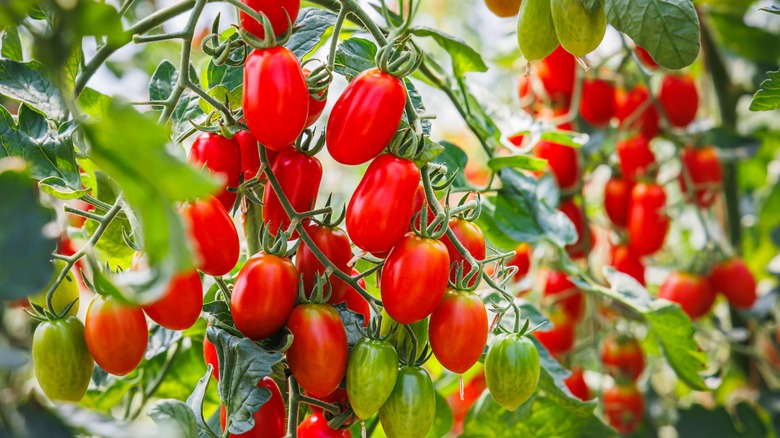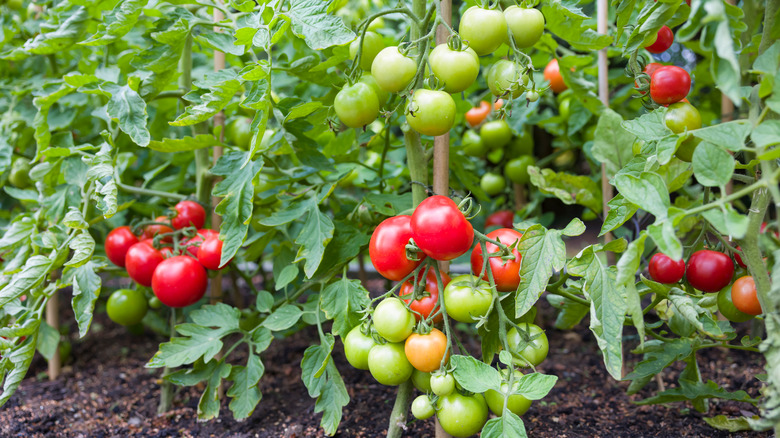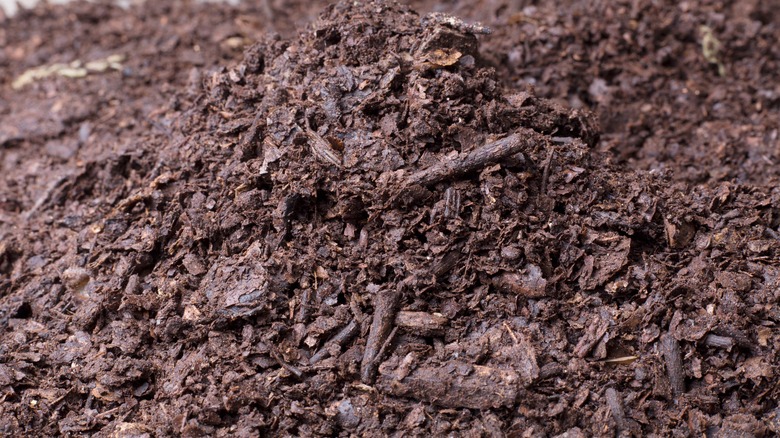The Common Garden Waste That Will Make Your Tomato Plants Thrive
Tomatoes are the stars of many backyard gardens. Whether you like bite-sized tomatoes that explode in your mouth or juicy giants that fit perfectly on burger buns, having a bright and healthy tomato makes gardening worth the effort. Since tomatoes aren't native to most backyard gardens, having originated in the Andes, soil must be amended to allow tomatoes to grow happily and healthily where they're planted. A great way to give your tomatoes a nutritional boost is with leaf mold, a gold mine of rich nutrients.
Leaf mold is free to make if you have access to deciduous trees, making it a wallet-friendly way of growing tomatoes. It takes some patience since you have to let nature do its thing, but if you have the space and resources to make several leaf piles, you can have a constant supply of supercharged compost to feed your tomatoes. And while tomatoes do well with leaf mold, just about any plant can benefit from it.
Tomato plants love leaf mold
What is it about leaf mold that makes tomato plants so happy? For starters, leaf mold is full of nutrients from the leaves it was made from. It helps bring new life to tired old soils. Tomatoes like plenty of phosphorus, and since leaf mold creates a build-up of phosphorus, the two go hand-in-hand. The tomatoes will feed off of the build-up and prevent the soil from holding too much, creating balance. Since tomatoes are hungry plants that will soak up all the nutrients, you'll need to fertilize with leaf mold and other nutrient sources about three times throughout the growing season. Prep your soil with a generous amount at the start of the season and then again once or twice more as the plants grow.
Since leaf mold is made through a much slower process than typical compost, beneficial fungi are able to thrive better, which helps out tomato plants and the soil. High microbial content in the soil, which includes the presence of fungi, results in healthier plants that are more capable of fighting off diseases. A study in the Urban Agriculture & Regional Food Systems journal reported that tomato plants grown with leaf mold were healthier than tomato plants grown without.
Turn fallen leaves into garden gold
Making leaves into something usable in the garden is easy, but it will require patience. You likely won't get to use your first batch for up to three years, so it's wise to start a new pile each year until you can use the first pile. Then, you can refill the first pile after using it and keep the process going for years to come. Though it takes time, it's an easy way to dispose of dead leaves and turn them into something useful in the garden. Even if you live in an urban area with few trees, you can collect leaves wherever you find them, provided they're not contaminated with pollution or chemicals.
Gather the leaves into an area and wet them down. You can keep them in a trash bag, compost bin, or in an open pile protected from the wind. If you live in a windy area, you should opt for a setup that will keep the leaves in place, even if it's just a board on top of the leaves. Unlike compost, leaf mold doesn't need to be turned often; stirring once each year is enough. Wet the leaves again when they dry out, but if you keep them in an open area that will receive moisture from snow and rain, you won't have to do this. After two or three years, your leaf mold will be ready to use. Mix it into the soil or use it as mulch.


